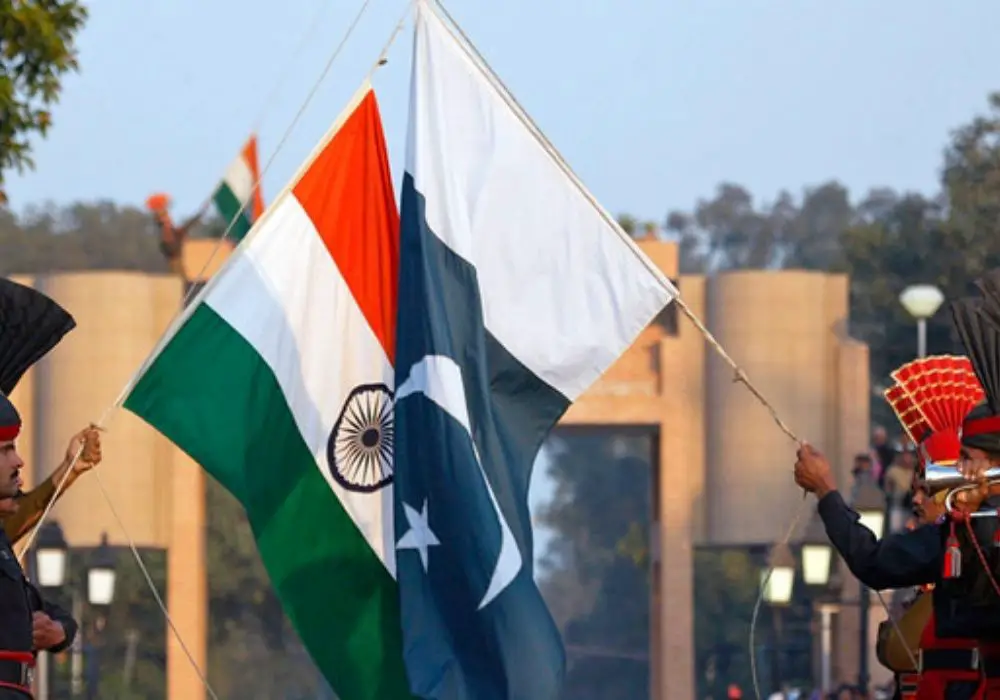Enduring Indo-Pak rivalry
1 day ago
The rivalry of India and Pakistan has become the most enduring and unresolved conflict of our time. The main factors behind the rivalry include territorial nature of rivalry, disparate national identities, power symmetry and incompatibility in the strategic goals. Since the birth of the two states in 1947, both countries are engaged in wars and crises. The conflict has affected every dimension of inter-state and societal relations between the two countries. The specific factors involved in the persistence of this conflict are power asymmetry, territorial divisions, incompatible national identities, differing domestic power structures (democracy versus authoritarianism), irredentism, presence of nuclear weapons and the great power involvement.
Since late 1980s, the acquisition of nuclear weapons and terrorist tactics has led to the possibility of war in South Asia with unimaginable consequences. Enduring rivalries are defined as conflicts between two or more states that last for more than two decades with several militarized inter state disputes. The India Pakistan conflict is over territory, national identity and power position in the region. The root cause of the conflict lies in territorial, religious or ethno-cultural differences. Kashmir is the essential bone of contention between them. Among other factors that have influenced their relationship include changes in capabilities including the acquisition of nuclear capabilities, changes in government, domestic pressures, relationships with other states including the United States, Soviet Union and China, and changes in the international environment.
From 1947 to 2001, India and Pakistan were engaged in militarized confrontation. They were also engaged in significant arms acquisition competitions. From 1947 to 2001, India and Pakistan kept moving between democracy and non-democracy. The democratic transition in Pakistan had a huge impact on the rivalry. The change in leadership is also an important factor that can led to a revolution in diplomacy, peace agreement and reorientation of foreign policy. The conflict resolution mechanism suggests that third parties can reduce and resolve the conflicts. But in the case of India and Pakistan, the involvement of great powers has prolonged and institutionalized the conflict rather than ending it through negotiation. Thus, it is obvious that the resolution of the India-Pakistan conflict is not the primary motive of major powers involved
The great powers who are active in South Asia particularly the US and China have their own strategic agenda and do not facilitate regional conflict resolution.
The India-Pakistan rivalry has varied significantly in intensity across time and issue area. The India-Pakistan conflict is both enduring and asymmetric. Asymmetric conflicts involve states of unequal power capability measured in terms of material resources including size, demography, military capability and economic skill. Since 1965, India’s policy has been to maintain deterrence vis-a-vis Pakistan. The presence of unresolved territorial issues encouraged the development of rivalry and is likely to escalate to war and tend to recur. A multi-dimensional analysis is needed to understand what led to the prolongation of the rivalry. The post-1998 crises including the Kargil War (1999) and the attack on the Indian Parliament (2001) followed by the Indian military’s mobilization (2002-03) emphasised on the urgent need towards resolution, which requires both favorable conditions and individual leadership efforts.
The prospects for peace between India and Pakistan are not encouraging. The origins of this rivalry, its intensity of violence, failure of mediation and conflict management and its persistence shows that the relationship is not likely to change. There are several structural factors that increase the probability of violent interaction. The ongoing territorial dispute over Kashmir and low levels of economic development for both states mean that the use of force appears to be a foreign policy instrument. The rise of Islamism and Hindu nationalism and their role in shaping state ideology and national identities has played a complex role in the rivalry. The Kashmir conflict has less to do with geo-strategic and economic significance and more with national identity. The addition of nuclear weapons may also increase pressures but both states are aware of the costs and risks associated with nuclear war. The conditions conducive to war are present but the last step remains indeterminate due to human choice.
The first step towards stability in India Pakistan relations would be for the leaders of two sides to move away from nuclear war. Each side needs to communicate to the other that there would be no relative gains but only absolute losses in nuclear war. The India-Pakistan enduring rivalry has survived the twentieth century and shows little signs of termination in future. The general instability in the conflict creates a non-conducive environment for dialogue. The rivalry is one of the longest lasting ones in contemporary world.

No comments:
Post a Comment